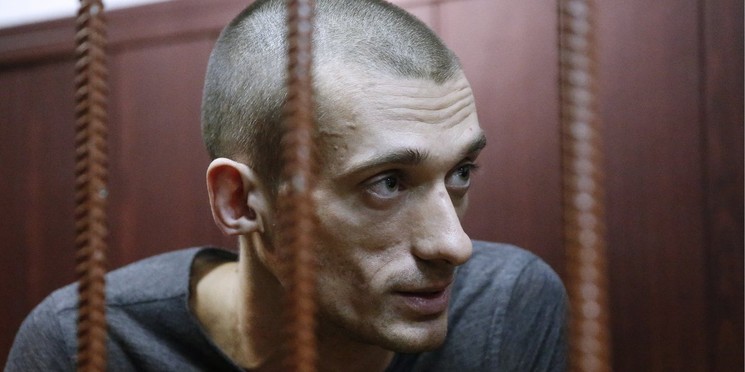

Biography
Pyotr Pavlensky is one of the most provocative and controversial contemporary artists, known for his extreme performance art that explores the boundaries between art, politics, and personal sacrifice. Born on March 8, 1984, in Leningrad (now St. Petersburg), Russia, Pavlensky's works often blur the lines between art and activism, using his own body to challenge and critique the oppressive political environment in Russia. His performances have earned him both praise and criticism, making him a key figure in the debate on the limits of art and its role in society.
Pavlensky studied monumental art at the St. Petersburg Art and Industry Academy and furthered his education at the Arte Foundation for Culture and Arts. In 2012, he co-founded the independent online newspaper Political Propaganda, which aims to analyze contemporary art through the lenses of politics, feminism, and gender equality. The publication was recognized with the Alternative Prize for Russian Activist Art in 2013, further cementing Pavlensky's reputation as a leading figure in political art.
His first widely recognized performance took place in 2012, when he sewed his lips shut in protest against the imprisonment of the feminist punk group Pussy Riot. This act, performed in Kazan Cathedral in St. Petersburg, symbolized the suppression of artistic expression in Russia. The controversial protest captured international attention, and Pavlensky's willingness to endure physical pain for his political message made him an emblematic figure in the fight against government repression. Although he was briefly detained and sent for a psychiatric examination, he was deemed sane and released.
In 2013, Pavlensky continued his radical protest actions with The Carcass, a performance in which he wrapped himself in barbed wire in front of the Legislative Assembly of St. Petersburg. This work was a metaphor for the growing number of laws in Russia designed to suppress civil activism and political dissent. The barbed wire, traditionally used to confine livestock, represented how these laws were constricting Russian citizens, reducing them to mere animals trapped in pens.
However, it was Pavlensky's scrotum nailing performance on November 10, 2013, in front of Lenin's Mausoleum in Moscow that would become his most infamous act. Naked and sitting on the cold stone pavement, Pavlensky hammered a nail through his scrotum, permanently affixing it to the cobblestones. The act, performed on the annual Russian Police Day, was a stark commentary on the apathy and political indifference that plagued Russian society. The protest led to his arrest, marking a new chapter in his ongoing struggle with the authorities.
Pavlensky's protests did not end there. In 2014, he organized Freedom, a protest in support of the Ukrainian Revolution, in which he and his collaborators built and set fire to a barricade, shouting Maidan slogans. Later, in 2015, he doused the door of the Russian Federal Security Service (FSB) headquarters in Moscow with flammable liquid and set it alight, in a performance titled The Burning Door, symbolizing the repressive power of the FSB. This act resulted in his arrest and more serious charges, including vandalism and debauchery, although Pavlensky himself insisted on being charged with terrorism.
In one of his most extreme acts, Pavlensky cut off his earlobe with a chef's knife while sitting naked on the roof of the Serbsky Center, a psychiatric institution in Moscow, to protest the abuse of psychiatry for political purposes in Russia. This act of self-mutilation further underscored the artist's willingness to push the limits of personal pain to make his message heard.
Through his extreme performances, Pavlensky has sparked intense debate about the boundaries of art, activism, and the human body. While some view his work as excessive and brutal, it is clear that each of his performances carries deep political and social messages. By using his body as both a canvas and a tool for protest, Pavlensky forces the viewer to confront uncomfortable truths about the state of Russian society. His work, though shocking, challenges us to reconsider the role of art in times of political oppression and how far an artist is willing to go in the pursuit of social change.
Nationality




